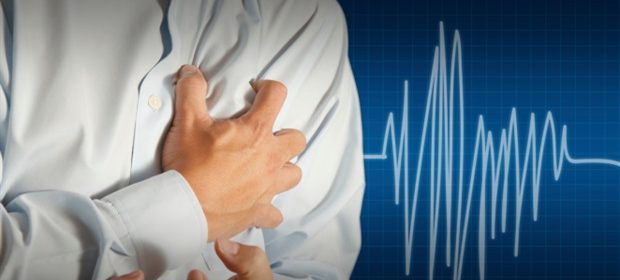Atrial Fibrillation Facts

- Atrial fibrillation (AF) is one type of arrhythmia. An arrhythmia is a problem with the speed or rhythm of the heartbeat.
- A disorder in the heart’s electrical system causes AF and other types of arrhythmia.
- AF occurs when rapid, disorganized electrical signals in the atria cause them to fibrillate (contract in a very fast and irregular way). When this happens, the heart’s upper and lower chambers don’t work together as they should.
- Often, people who have AF may not even feel symptoms. However, even when not noticed, AF can lead to an increased risk of stroke. In many patients, particularly when the rhythm is rapid, AF can cause chest pain, heart attack, or heart failure.
- The three types of AF are paroxysmal (the AF comes and goes), persistent (the AF continues until stopped with treatment), and permanent (a normal heart rhythm can’t be restored).
- Certain conditions, such as problems with the heart's structure or conditions that damage the heart's valves, can lead to AF. Other conditions, such as obesity and high blood pressure, make it more likely that an episode of AF may happen.
- More than 2 million people in the United States have AF. It's more common in older people, and it affects both men and women.
- Signs and symptoms of AF include palpitations, shortness of breath, weakness or difficulty exercising, chest pain, dizziness or fainting, fatigue (tiredness), or confusion.
- AF has two major complications—stroke (caused when blood clots form in the atria and break off and travel to the brain) and heart failure (caused by the heart’s inability to efficiently pump blood to the rest of the body). Heart attack is another, rarer complication.
- Doctors diagnose AF using family and medical history, a physical exam, and diagnostic tests and procedures. AF can be specifically diagnosed only by EKG recordings.
- AF treatments, which include medicines and procedures, are designed to prevent blood clots from forming, restore normal the heart rate or rhythm, and treat underlying conditions that cause or raise the risk of AF.
- People who have AF can live normal, active lives. For some people, treatment can cure AF and return their heart to its normal rhythm. For people with permanent AF, treatment can successfully control symptoms and prevent complications.
Further Reading
- All Atrial Fibrillation Content
- Atrial Fibrillation (AF)
- Atrial Fibrillation Signs and Symptoms
- Atrial Fibrillation Diagnosis
- Atrial Fibrillation Treatment
More…
Last Updated: Feb 26, 2019
Source: Read Full Article